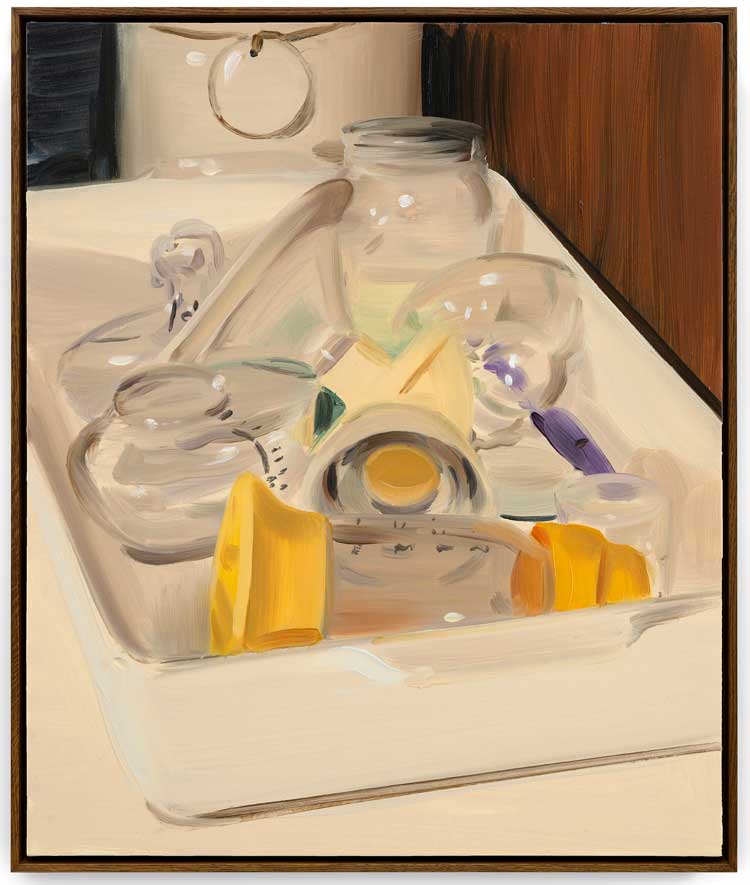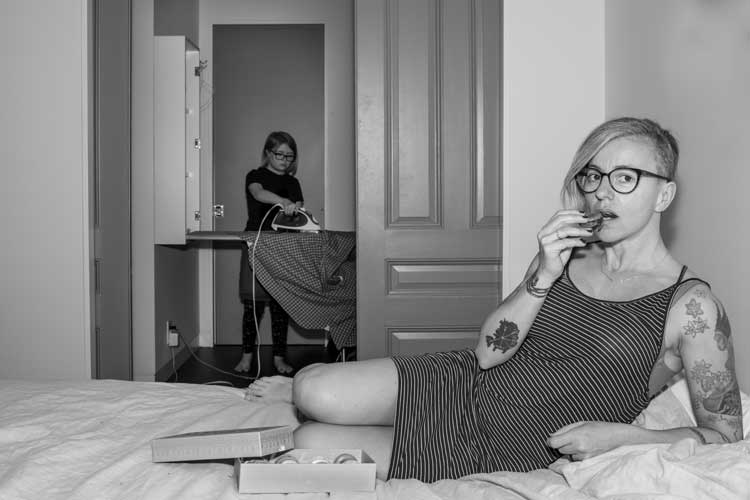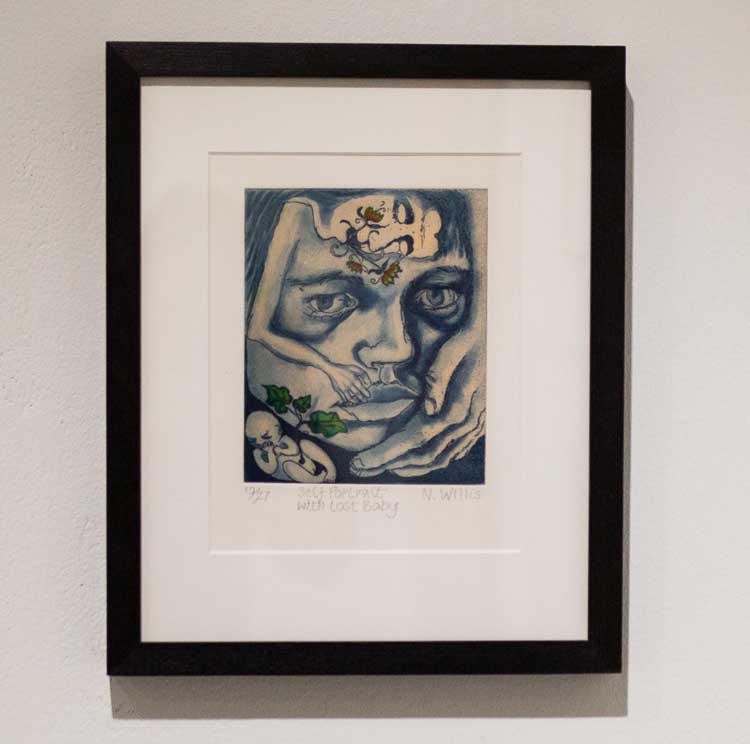.jpg)
Installation view, Acts of Creation: On Art and Motherhood, Arnolfini, Bristol. Photo: Lisa Whiting. Courtesy Arnolfini and Hayward Gallery Touring.
Arnolfini, Bristol
9 March – 26 May 2024
by DAVID TRIGG
In her celebrated 1971 essay, Why Have There Been No Great Women Artists?, Linda Nochlin argued that for a female artist to succeed she must rebel against “the socially approved role of wife and mother, the only role to which every social institution consigns her automatically”. But what about those who rejected Nochlin’s advice? This major touring group exhibition, curated by writer and critic Hettie Judah, shines a light on the many artists who have shown an incredulous art world that embracing motherhood need not necessarily equate to laying down one’s practice. Currently on show at the Arnolfini Gallery in Bristol, Acts of Creation: On Art and Motherhood focuses on the lived experience of motherhood while celebrating its potential as a catalyst for creativity.
Judah has divided the exhibition across four themes, the first of which, Creation, reflects on the mental, emotional and physical upheaval of becoming a mother. In the opening room, Heather Spears transports us to a maternity ward with an incredible series of six drawings of labouring women. These dynamic sketches, made in a Copenhagen hospital in 1987 and selected from a portfolio of hundreds, capture with great sensitivity the anticipation, exhaustion and elation of childbirth.
The effects of pregnancy on the body are recorded by Susan Hiller in Ten Months (1977-79), a series of photomontages documenting the artist’s growing prenatal bump over the course of 10 lunar months paired with journal observations regarding the place of women in society. Nearby, and equally unsentimental, is Afterbirth (1990), a pastel drawing by Claudette Johnson that unabashedly reveals the stretchmarks running across her postpartum belly.
-Claudette-Johnson..jpg)
Claudette Johnson, Afterbirth, 1990. © Claudette Johnson.
The haze of life with a newborn is brilliantly captured by Tabitha Soren’s photographs printed on to muslin crib sheets. Recorded over 12 months using a camera mounted over her bed, these multiple exposure images are a disorienting fusion of disrupted sleep, endless feeds, countless nappy changes and constant soothing. Other artists have contributed works on feeding. A standout is Caroline Walker’s small painting Bottles and Pumps (2022), a quiet still life of plastic feeding paraphernalia on a draining board – emotive objects for any mother who has grappled with the ups and downs of nursing.

Caroline Walker, Bottles and Pumps, 2022, Courtesy the artist.
The exhibition’s second theme, Maintenance, takes us beyond the infant years, lifting the lid on the anxieties of raising children and the different ways in which artists have balanced parenting with their need to create art. A master of the latter is Sally Mann, whose visceral black-and-white photograph Emmett’s Bloody Nose (c1985) depicts her injured young son with his brother in deadpan closeup.
Another artist mother collaborating with her child is Marlene Dumas, who in 1994 allowed her then six-year-old daughter, Helena, to modify and “improve” 28 of her inked head drawings with coloured paint. Titled Underground (1994-95), the results are humorous, if mildly disturbing. One clown-like face is covered with bright red handprints and fingerprints; it is unclear how much supervision was involved, but Helena evidently had a riot. Elsewhere are the wonderful black-and-white photographs of Anna Grevenitis’s Regard series (2015-ongoing), which comprise posed self-portraits with her daughter, Luigia, who has Down’s syndrome. In each intimate scene of daily life, Grevenitis looks directly at the camera, an attempt perhaps to protect her daughter from prejudicial eyes.

Anna Grevenitis, Regard series, 2015–. Courtesy the artist.
Discrimination is also addressed in Barbara Walker’s Louder than Words series (2006-09), which features portraits of her son made on prints of the police dockets issued to him after stop and search incidents. A product of Walker’s anger, the drawings reflect her frustration at not being able to shield her teenage child from repeated racial profiling and are another manifestation of the powerful motherly urge to protect.
Some second wave feminists, such as Nochlin, assumed that motherhood was a trap that would consign women to the kitchen. In their eyes, it was simply impossible to have children and continue making art. Others, however, embraced maternity as part of the lived experience of women. Responding to this history, Judah has created an intimate space centred around a vintage kitchen table and filled with archive material from feminist artists and collectives who, between the 1960s and 1980s, argued in different ways for the work of mothering to be valued and honoured. A highlight is Mierle Laderman Ukeles’s Manifesto for Maintenance Art! (1969), created soon after she became a mother. The typed manifesto proposes that the artist’s essential domestic work and caring responsibilities be performed publicly, in a museum. As she explains in the text: “I am an artist. I am a woman. I am a wife. I am a mother. (Random order). I do a hell of a lot of washing, cleaning, cooking, renewing, supporting, preserving, etc. Also, (up to now separately) I ‘do’ Art. Now I will simply do these everyday things, and flush them up to consciousness, exhibit them, as Art.”

Nancy Willis, Self-Portrait with Lost Baby, 1988. Installation view, Acts of Creation: On Art and Motherhood, Arnolfini, Bristol. Photo: Lisa Whiting. Courtesy Arnolfini and Hayward Gallery Touring.
It is to Judah’s credit that a section of the exhibition is dedicated to the sensitive and important theme of baby loss, with works addressing experiences of involuntary childlessness, forced adoption and abortion. Included here are well-known etchings and textiles by Paula Rego and Tracey Emin, but it is works by lesser-known artists that are most affecting. Nancy Willis’s Self-Portrait with Lost Baby (1988) is a haunting expression of the trauma she experienced as a young woman living with muscular dystrophy in the early 1970s. Told by doctors that she would die young, she chose to terminate her pregnancy in the belief that she would not live long enough to care for her child. She was, at the same time, sterilised. A decade later, however, she received a new prognosis and longer life expectancy, but the sterilisation was irreversible. The pain and grief of this is evident in Willis’s drawing, which shows comforting arms wrapped around her distressed face.
.jpg)
Installation view, Acts of Creation: On Art and Motherhood, Arnolfini, Bristol. Photo: Lisa Whiting. Courtesy Arnolfini and Hayward Gallery Touring.
At the heart of the show is what Judah calls The Temple, a large gallery with walls painted ultramarine (referencing the Madonna’s robes) and dedicated to self-portraits of artist mothers. Here are heroic poses, defiant gestures, tender moments and tired bodies. Leni Dothan causes us to look twice with Sleeping Madonna (2011), which at first appears to be a photograph of an exhausted nursing mother. Except that this Renaissance-style composition is in fact a video; Dothan’s weary movements seem almost slow motion. Elsewhere, Billie Zangewa ’s stunning silk tapestry, Every Woman (2017), depicts a stoic mother in high heels and an elegant blue blouse. Standing tall in a family room, she towers over piles of abandoned toys, clutching a ragged teddy bear and pondering her next move.
This gallery, like the entire show, argues for the artist mother to be recognised as a serious cultural figure and for motherhood to be accepted as a legitimate subject for contemporary art. Though what we don’t see amidst the heartache, exhaustion, boredom and anxiety is the joy, delight and, yes, even the fun side of motherhood. The absence of such imagery begs the question of where it may be found. Is it even possible to represent these experiences authentically without straying into sentimentality or idealism?
To be both an artist and a mother is not as controversial a choice as it once was, though the struggle of balancing child rearing with sustaining a creative practice remains an uphill one. Some of the barriers that once held back artist mothers have been removed, and this exhibition is itself testament to the shift in the conversation around motherhood within the art world. (Indeed, Judah has been spearheading the cause). But there is still a way to go before the needs of artist mothers and other parents are properly accommodated. Acts of Creation feels like a significant step forward.